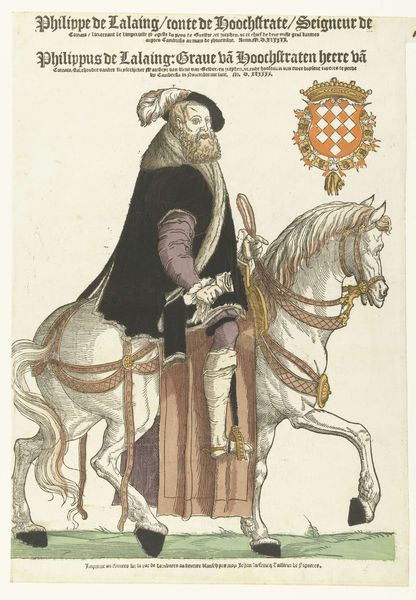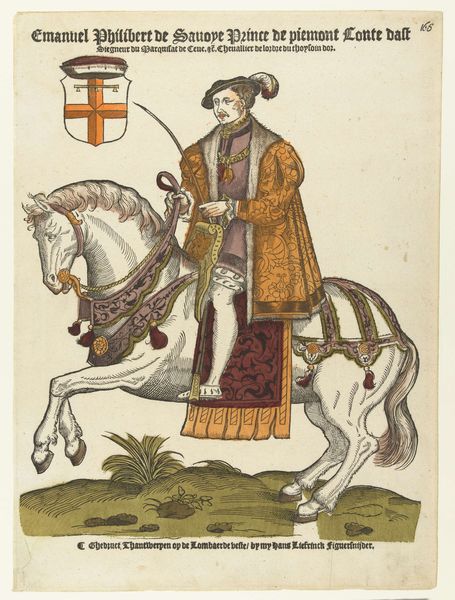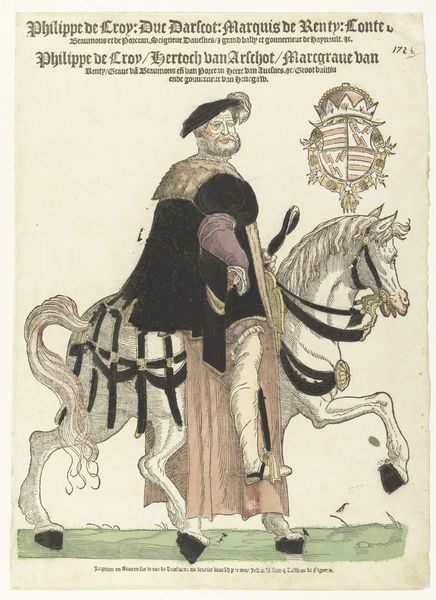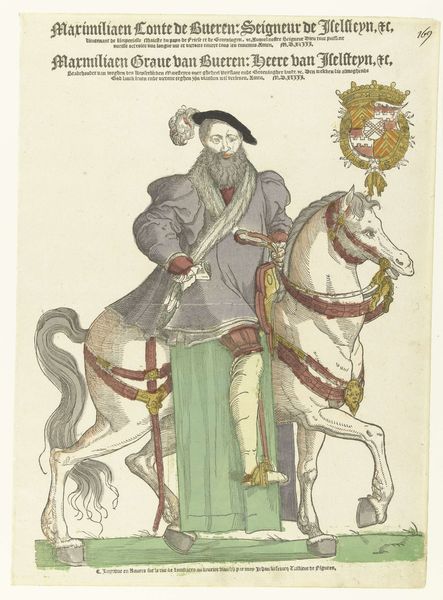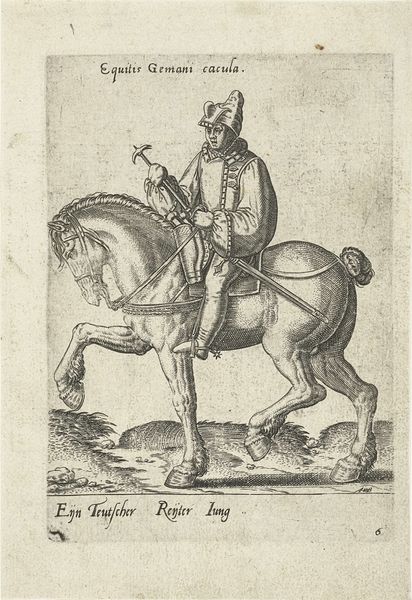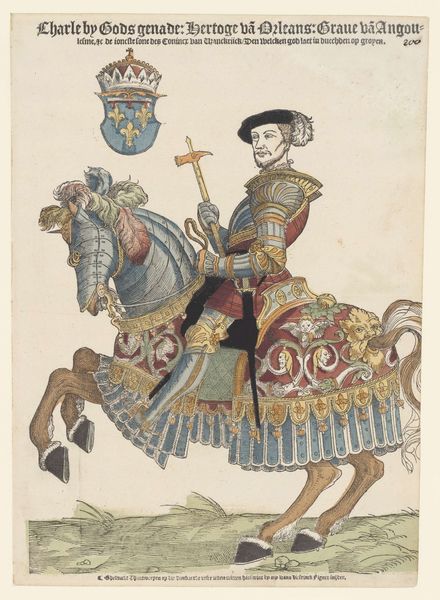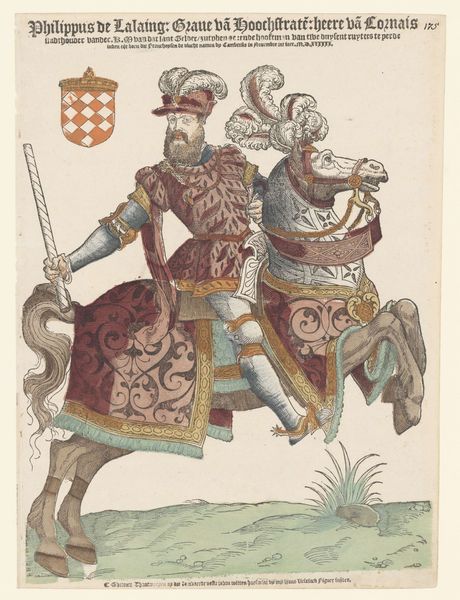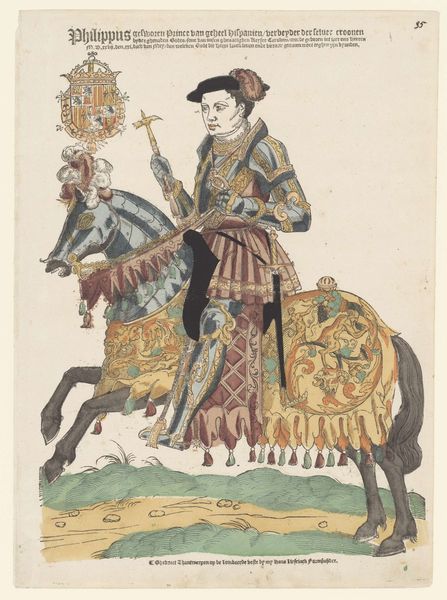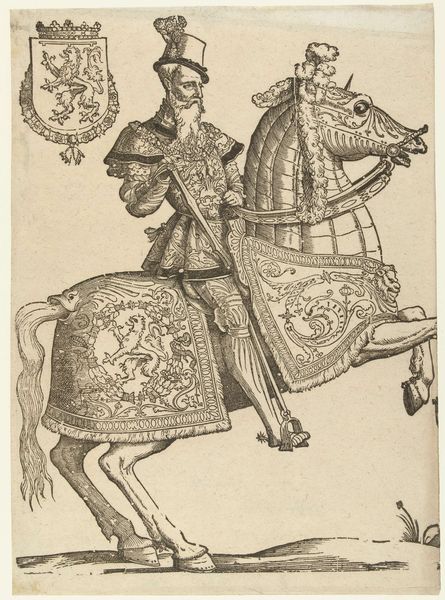
print, woodcut
# print
#
traditional media
#
flat colour
#
woodcut
#
history-painting
#
northern-renaissance
#
erotic-art
Dimensions: height 409 mm, width 295 mm
Copyright: Rijks Museum: Open Domain
Editor: This is "Portret van Maria van Hongarije te paard," a woodcut made by Cornelis Anthonisz. sometime between 1538 and 1553. I’m immediately struck by how regal and imposing the figure is, even in such a flat, almost simplified style. What symbolic meanings can you glean from this piece? Curator: It's fascinating to consider the layers of symbolism embedded here. The horse itself, of course, has long been a symbol of power, nobility, and even conquest. Consider, though, the restraint apparent in Maria’s grip on the reins, the way she seems almost detached from the dynamism of the animal. Does that detachment speak to you? Editor: It does – almost as if she's displaying authority and composure over powerful forces, which, as a queen, must have been part of her daily existence. Curator: Precisely. Now, look at her attire: the somber black, the simple lines. Contrast that with the ornate detailing of the horse's harness, and then notice the complex coat of arms positioned at the top left. Editor: I see a real contrast between the personal and the political – as though she's intentionally downplaying her individual presence to emphasize her dynastic role. The eye is definitely drawn to the details and how the space is used in relation to the text above, as well as the symbols included throughout the artwork.. Curator: That's a key point. And it reminds us that portraits, even those seemingly straightforward, are often carefully constructed statements about identity and power. This use of iconographic language transcends eras. Editor: It is amazing to consider how this particular visual language can persist over such long timeframes. I have a much better sense of the choices artists and their subjects were making around communicating ideas through visual means in portraiture.
Comments
No comments
Be the first to comment and join the conversation on the ultimate creative platform.

